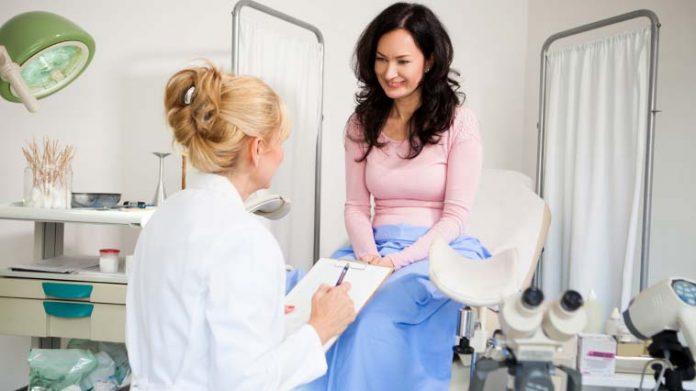Many of us have a vague idea about where the cervix is (err… somewhere deep inside the body?) and what it does (something concerning a screaming woman in labour?). But what a large number of us women blissfully ignore is that we need to pay it some attention every now and then. Even when we’re nowhere close to going into labour.
WTM reached out to two of the island’s experts to get the inside scoop on this often avoided subject.
Dr Yasmin Kazi, consultant advanced gynaecologic laparoscopic surgeon, obstetrician and fertility specialist at Bahrain Specialist Hospital, explains: “The cervix is the opening at the lowermost part of the uterus, leading into the vagina. It acts as a physical barrier between the external environment (vaginal canal) and the uterus.”
It allows the flow of menstrual blood from the uterus into the vagina, and directs sperm into the uterus during intercourse. “During pregnancy, the cervical opening closes to help keep the foetus in the uterus until birth. Another important function of the cervix occurs during labour, when it dilates (widens), to allow the passage of the foetus from the uterus to the vagina,” she says.
This very useful tube-like body part is susceptible to abnormalities. Dr Kazi says: “Infection of the human papillomavirus (HPV) may cause cervical dysplasia, or abnormal growth of cervical cells.” This may lead to cervical cancer, and can be caused through having multiple partners, smoking, taking birth control pills and engaging in early sexual activity.
HPV is a group of more than 150 related viruses. It is transmitted through intimate skin-to-skin contact, and is fairly common in both men and women. In most cases, HPV goes away on its own and does not cause any health problems. If the body cannot fight the virus over a long time, it can lead to cervical cancer.
Unfortunately, this deadly cancer comes with no warning symptoms in the early stages. “The most common symptoms and signs of cervical cancer are abnormal vaginal bleeding, increased vaginal discharge, bleeding after going through menopause, pain or bleeding during sex, and pelvic pain,” says Dr Kazi.
 Dr Alka Gupta, service line head of obstetrics and gynaecology at the American Mission Hospital, says: “The two major types of cervical cancer are adenocarcinoma and squamous cell carcinoma.” She adds that most risk factors are associated with an increased risk of acquiring or having a compromised immune response to infection with HPV, the main reason for most cervical cancers. A history of sexually transmitted infections (like chlamydia trachomatis or genital herpes), immunosuppression (human immunodeficiency virus infection) and early age at first childbirth (younger than 20 years) and three or more full-term births are also associated with an increased risk of cervical cancer.
Dr Alka Gupta, service line head of obstetrics and gynaecology at the American Mission Hospital, says: “The two major types of cervical cancer are adenocarcinoma and squamous cell carcinoma.” She adds that most risk factors are associated with an increased risk of acquiring or having a compromised immune response to infection with HPV, the main reason for most cervical cancers. A history of sexually transmitted infections (like chlamydia trachomatis or genital herpes), immunosuppression (human immunodeficiency virus infection) and early age at first childbirth (younger than 20 years) and three or more full-term births are also associated with an increased risk of cervical cancer.
It is alarming to know that in Western countries, women hesitate to get themselves tested due to body image issues, but Dr Gupta cites that the hospital screens roughly 200 patients for cervical cancer every month, and an average of only five per cent of those need further investigation. She says: “In my experience here, education plays a dominant role in health care and Bahraini women are generally well aware and educated. Public awareness campaigns and word of mouth through family and friends play an important part.”
The tests are pretty accurate, she says, and with a combination of the Pap smear and other newer techniques, there is around 95 per cent accuracy of detecting abnormal cells. “Sometimes a biopsy of the cervix needs to be done if there is a suspicion or a borderline case. AMH has a turnaround time of 48 hours to give the results to patients,” she says.

Further treatment, if required, depends on the stage of the cancer, the age of the patient, and other health problems. Whether pregnancy is desired in the future is also considered.
“Treatments include surgery, radiation therapy and/or chemotherapy. Surgery can involve a radical hysterectomy – entirely removing the cervix, uterus, and upper part of the vagina – or in some situations, removing all or part of the cervix but leaving the uterus in place.
 The Gardasil and Cervarix vaccines, available in Bahrain, prevent HPV infection with the most common HPV types that are associated with cancers. Vaccination should occur before sexual activity to offer the full benefit. It is recommended that 11-12 year old girls receive it, and young women aged 13 through to 26 should seek the vaccine if they did not receive any or all doses when they were younger. Gardasil is also approved for use in males aged nine to 26.
The Gardasil and Cervarix vaccines, available in Bahrain, prevent HPV infection with the most common HPV types that are associated with cancers. Vaccination should occur before sexual activity to offer the full benefit. It is recommended that 11-12 year old girls receive it, and young women aged 13 through to 26 should seek the vaccine if they did not receive any or all doses when they were younger. Gardasil is also approved for use in males aged nine to 26.
 What’s the test all about, you ask?
What’s the test all about, you ask?
The cervical test, commonly known as a Pap (short for Papanicolaou, the inventor of this life-saving examination) Smear, is quick, safe and almost painless, barring some discomfort that lasts for a couple of minutes at best. The doctor will use a special stick, brush or swab to take a sample of cells around your cervix. The sample is then ‘smeared’ onto a small glass slide (hence the name of the test), and then sent to the lab to make sure the cells are healthy.
Cervical testing should begin at age 21, with routine screening done every three years for women aged 21 to 65 years of age.





































